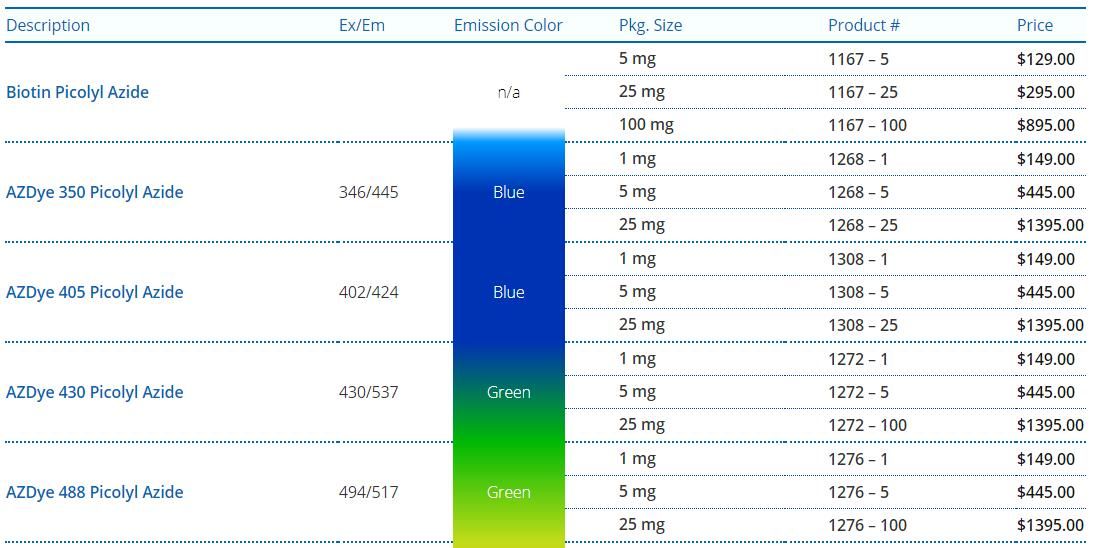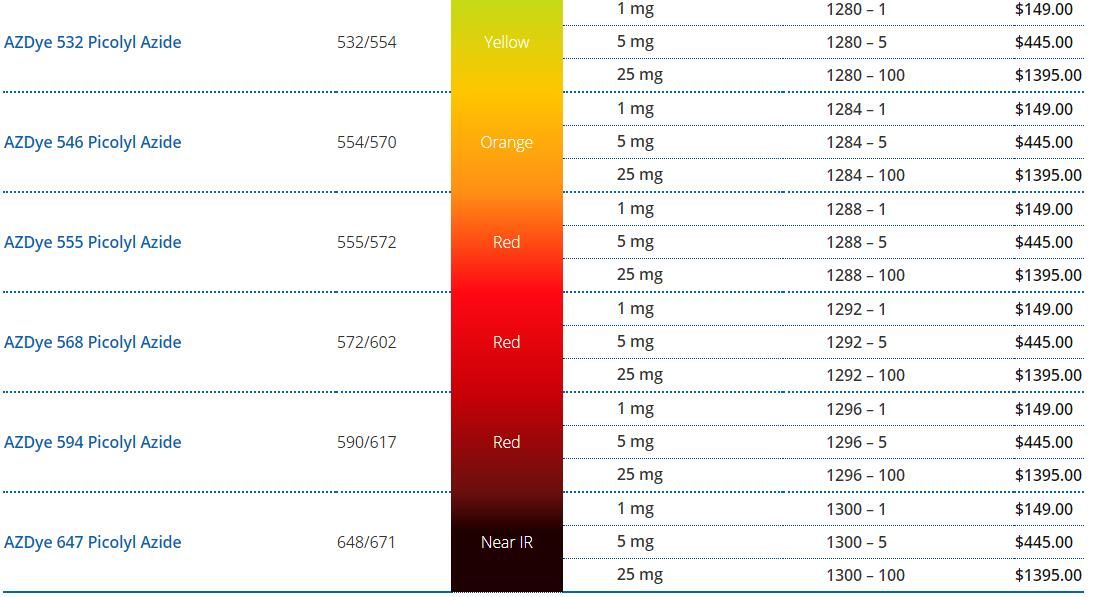Next Generation Azide Probes
新一代疊氮化物探針

The copper-catalyzed azide-alkyne cycloaddition reaction, or CuAAC, has been used extensively for the conjugation, immobilization, and purification of biomolecules as well as for monitoring various biological processes. Recent advances in design of copper chelating ligands such as THTPA or BTTAA improved kinetics of copper-catalyzed azide-alkyne cycloaddition reaction and greatly increased sensitivity of alkyne detection. In spite of many recent improvements this reaction still remains slow for detection of low abundance targets. The next step in improving kinetics of CuAAC was introduction of copper chelating moiety into azide reports, which raises the effective concentration of Cu(I) at the reaction site (Figure 1).
Figure 2. Conversion-time profiles of CuAAC with conventional and chelating azide.

The only practically useful azides bearing an internal copper-chelating motif are electron-donating picolyl azides. The chelating effect of picolyl azide moiety to raise the effective concentration of copper at the reaction site is so great that it leads to an increase of signal intensity of up to 40-fold. The use of picolyl azides allows for at least a tenfold reduction in the concentration of the copper catalyst without sacrificing the efficiency of labeling. In addition to the gain in sensitivity, the usage of picolyl-containing reporters and consequently the possibility of reducing the copper concentration allows for high-content imaging in approaches where CuAAC-based alkyne imaging is combined with a copper-sensitive method. In summary, the introduction of a picolyl moiety into an azide probe lead to a substantial increase in the sensitivity of alkyne detection. This will be of special value for the detection of low abundance targets..
Selected References:
1. Jiang, H.,et al.(2014). Monitoring Dynamic Glycosylation in Vivo Using Supersensitive Click Chemistry.Bioconjugate Chem.,25: 698.
2. Uttamapinant, C.,et al.(2012). Fast, Cell-Compatible Click Chemistry with Copper-Chelating Azides for Biomolecular Labeling. Angew. Chem. Int. Ed,.51: 5852.
3. A highly sensitive protocol for microscopy of alkyne lipids and fluorescently tagged or immunostained proteins. J. Lipid. Res., 57: 1934
Ordering information


